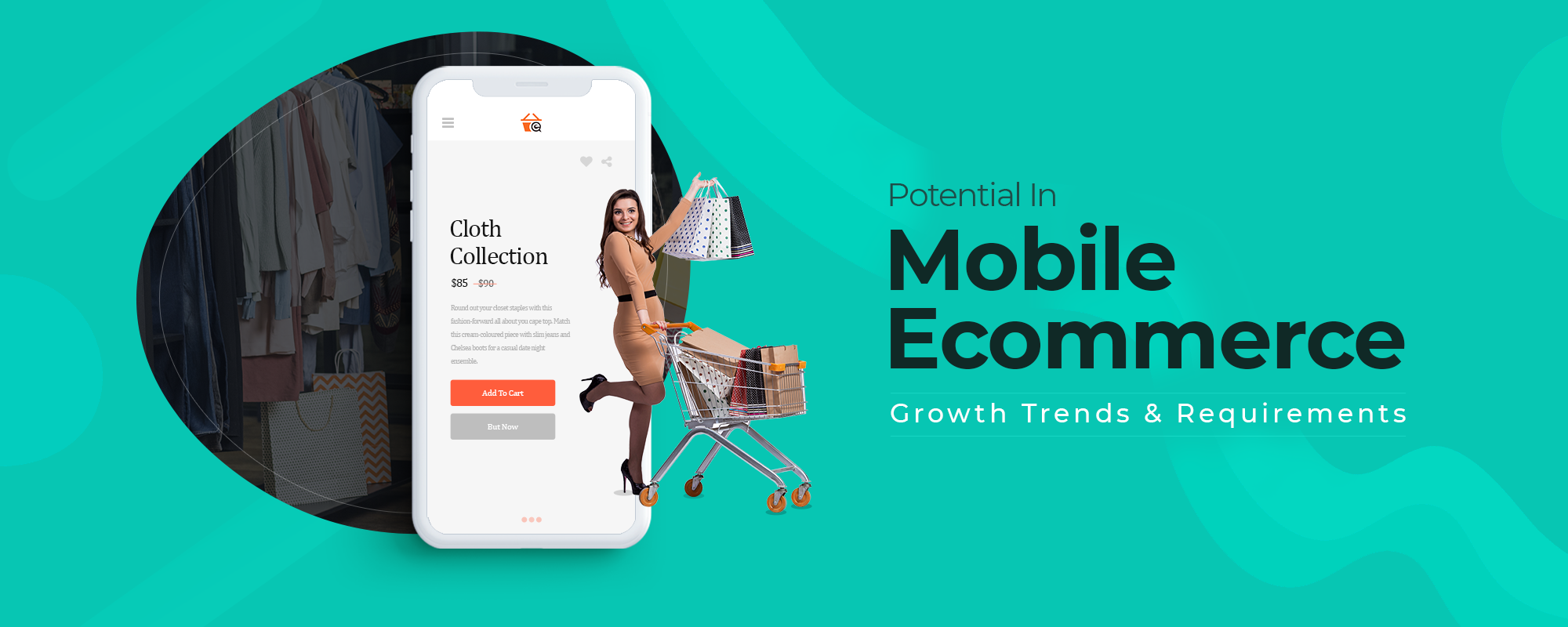Updated On: 17th June, 2019
With rapid demand for smartphones and mobile internet usage ruling the roost, mobile commerce is poised for exponential growth and will be standard for the mass market in a few years.
Mobile commerce entails retail, travel, advertising, proximity payments, and more. A slew of applications and services that are possibly accessible from the mobile devices; m-commerce is largely about this.
Today, the customer journey is no longer linear and are complex with multiple touchpoints. The vast array of preferences for highly curated experiences have to lead to the growth of mobile commerce.
With user-friendly apps and people getting more familiar with mobile net usage, M-Commerce has paved its way well. By 2020, U.S. mobile retail revenues are expected to amount to 339.03 billion U.S. dollars. Here are some more statistical information supporting the growth of mobile commerce:
- 53.9 percent of all retail ecommerce is expected to be generated via m-commerce by 2021 – Statista.
- The global mobile payment market will grow by more than 33% to reach 3388 billion US dollar – Allied Market Research.
- 64 percent of every dollar spent in retail stores is also influenced by digital and mobile is a big driver – Deloitte.
Benefits of Mobile Commerce
The underlying benefits of mobile commerce have revolutionized different industries and reconfigured consumer behavior altogether.
Omnipresence/Ubiquity
Mobile technology has provided retailers the benefit of connecting with users virtually from any location on a real-time basis. Retailers can connect with the users irrespective of their location. Online retailers are using this value proposition of mobile by alerting users through push notification.
Enhanced customer experience
M-commerce has enhanced the customer experience by providing easy access and convenience for shopping online. Technologies like chatbot have helped build a direct relationship between customers and brands. The retailer can easily resurface promotion deals and coupons at all the time of the day with push notifications.
Mobile Commerce Trends
Mobile technology along with the evolution of social media has changed the way consumers interact with their mobile devices. Right from product discovery to the purchase, mobile phones have become the major channel a customer uses. Some recent mobile commerce trends that will further lead to the growth of mobile commerce:
In-store Shopping Experience
This is a growing customer expectation to use mobile devices as a part of their in-store shopping experience. Customers want to scan products at the store and want them shipped at their home. This trend will provide a huge competitive advantage to retailers by blending an in-store shopping experience with the convenience of home delivery.
Along with it, receiving real-time promotions via mobile phone while in-store and earning loyalty points both online and in-store helps to foster customer loyalty.
Social Networks for Inspiration
Besides consumer ratings and reviews, a major ramification of how brands communicate their sales pitch is a determining factor for consumers purchasing their products. A majority of consumers have shifted to social media, mobile applications on their mobile phones to get inspiration for purchases. While consumers resonated the least with emails from brands or retailers.
Omnichannel Experience
Customers are exposed to multiple touch along the customer journey, hence the journey is no longer a linear path to purchase. The customer journey is definitely more dynamic, continuous and accessible.
The multichannel approach is replaced by a more customer-driven approach where the brands deliver a more personalized marketing strategy and customer experience that engages and educates the customer. Hence, Mobile commerce is an integral part of the omnichannel strategy.
Proximity Marketing
With the proliferation of smartphones, retailers are able to connect with customers 24 hours of the day. Location-based marketing becomes an important strategy to send out offers to consumers based on their location.
Marketers are using location-based targeting to show relevant ads to people who are on the move and do not have their data switched on. For example, let’s say someone walks into a clothing shop and receives a message on the mobile phone for a 30% discount. The technology has proven to provide a more personalized experience and drive more revenue.
Shoppable Tags on Social Media
Social media is another place for brands to expand their mobile commerce strategy. Majority of users turn to social media to discover new products. For example, shoppable tags on Instagram are helping brands to provide a more consistent shopping experience. Instagram accounts have become an extended version of the website or online store. The smooth transition for clicking an item on Instagram to the product page has helped brands drive more sales.
Mobile App Analytics
It is very important for retailers to leverage a large amount of data and plan future actions based on that data. In the case of m-commerce, retailers need to implement mobile app analytics during the development phase of mobile application in order to enable targeted marketing and effective product pricing and promotion strategies. A profound understanding of the mobile app market trends could be advantageous for entrepreneurs.
Requirements
Choosing the Right Mobile Platform
The first and foremost step is to decide if you want a mobile website or a mobile App. If mobile app is what you are looking for then you have to decide between Android and iOS mobile app development. Both Android and iOS mobile apps have unique advantages, based on the requirements of your customer segments; you must choose the right mobile platform that suits your business in the best way.
Mobile Friendly Content
We always focus more on getting the design and layout right but content plays an equally important role in either keeping your visitors or turning them away. Optimizing for mobile devices is not just about shrinking the features in mobile app or website; the major focus is on how you choose to display them. Your understanding of miniaturization and mobilization decides where your website or application ranks on the user experience.
Mobile User Experience
Designing the user experience for a custom mobile application is very different from doing that for a full resolution website. There are minute details that need to be taken care of to enhance usability.
Multiple Checkout and Fulfillment Options
A major portion of people abandon the mobile application when they have to create a new user account at checkout. The retailer can allow first-time users to buy without going through account creation. Offering multi fulfillment option like buying online and pick up in-store experiences can drive reduced cart abandonment rates.
Mobile Friendly Payment Gateway
Sales are the ultimate metrics on which we judge the performance of an online business. No matter how user-friendly your mobile application is, if your payment gateway is not optimized then it will lead to loss of conversions. Features like e-wallet, option to save shipping information, etc.must definitely be provided to enhance the user experience and thus the overall chances of conversion.
Offer the Perfect Experience to your Customers on a Smartphone
Conclusion
The mobile platform needs to focus only on the most important aspects for simplicity and usability. Bigger interactive buttons and less use of scroll is also something popular amongst custom mobile app developers. If you want to develop a custom mobile app or website for your business, consider a partner that can guide you and enable you to make an informed decision.

